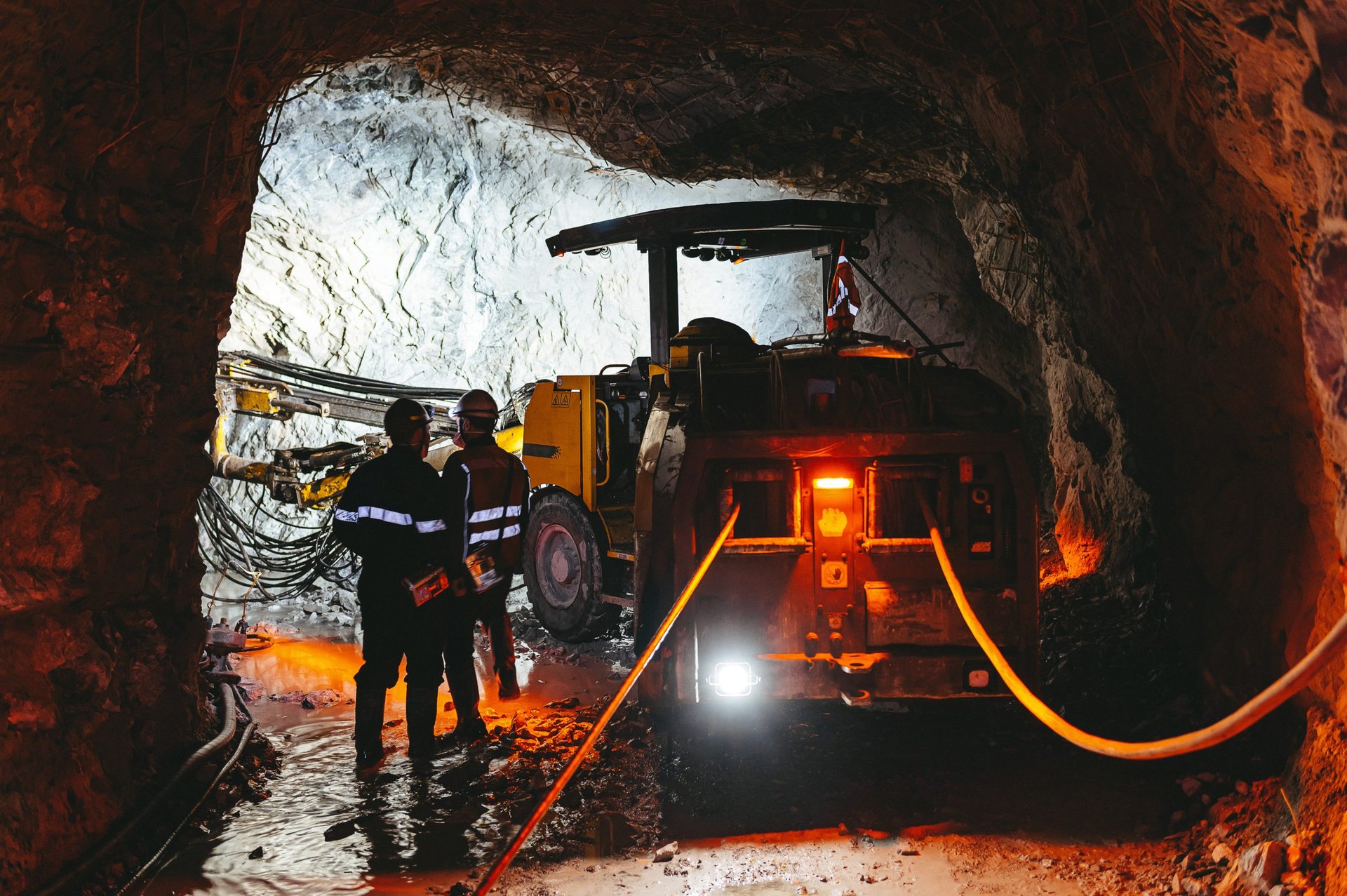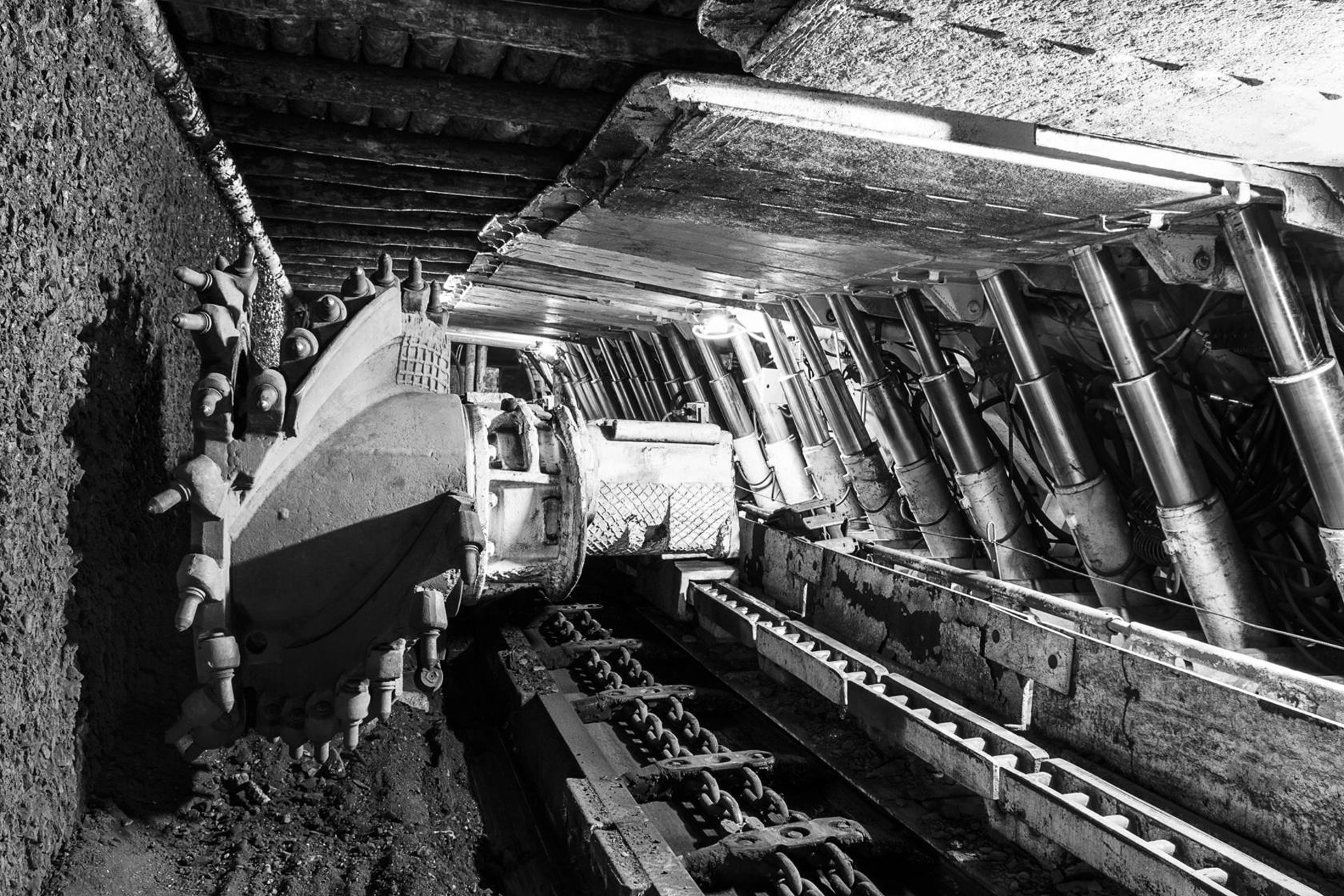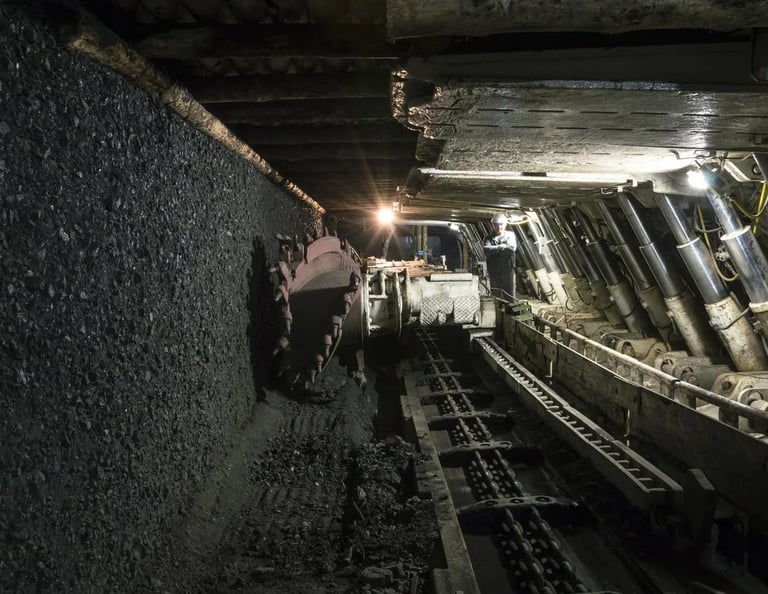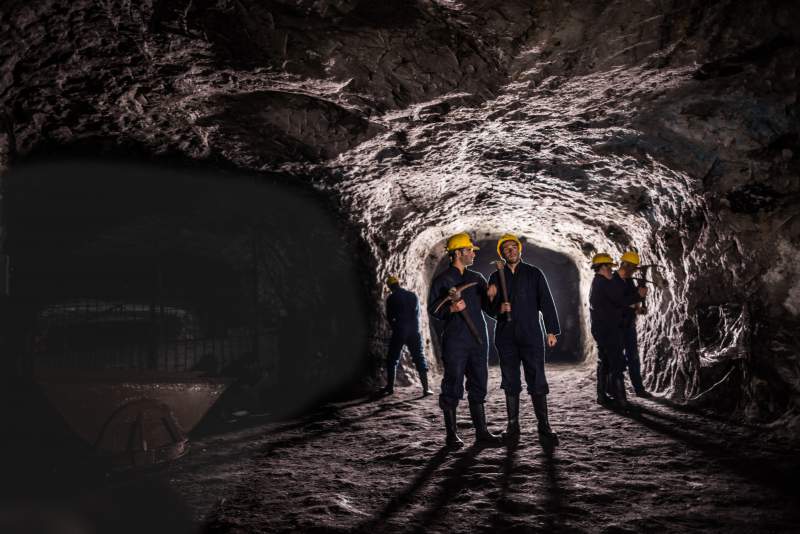Anhui Feichun Special Cable Co.,Ltd Li.wang@feichuncables.com

Exploring the Depths of Underground Mining: Techniques, Impacts, and the Path Forward
Dive into the world of underground mining, uncovering its techniques, safety protocols, environmental impacts, and future innovations. Learn how this vital industry extracts valuable minerals while addressing challenges like cost, safety, and sustainability.
Li Wang
10/15/20256 min read



Introduction
Beneath our feet lies a hidden world where vast reserves of minerals fuel industries, power economies, and shape modern life. From the gold in our jewellery to the coal powering electricity, underground mining unlocks resources buried deep within the Earth. This intricate process, however, is fraught with challenges, from high costs to safety hazards and environmental concerns. This article provides a comprehensive analysis of underground mining, exploring its techniques, advantages, disadvantages, safety measures, and future trends, while answering common questions to demystify this critical industry.
What is Underground Mining?
Underground mining involves extracting minerals and ores from beneath the Earth’s surface through a network of tunnels, shafts, and chambers. Unlike surface mining, which strips away topsoil to access shallow deposits, underground mining targets resources located at greater depths, often requiring complex infrastructure. This method is essential for accessing high-value minerals like gold, silver, coal, limestone, and potash, which are critical for industries such as construction, technology, and energy production.
Compared to surface mining, underground operations are more intricate due to limited access, confined spaces, and the need for robust ventilation and support systems. While surface mining may disturb large swathes of land, underground mining minimises surface impact, making it a preferred choice for accessing deep, high-grade deposits.
A Brief History of Underground Mining
The roots of underground mining stretch back to prehistoric times when early humans used rudimentary tools to extract copper and flint. Ancient civilisations, including the Egyptians and Romans, refined these techniques, digging tunnels to access valuable metals. The Industrial Revolution in the 18th century marked a turning point, introducing mechanised equipment, steam-powered machinery, and improved safety measures. These advancements transformed mining into a cornerstone of industrial progress.
In modern times, underground mining continues to evolve. A recent example is the October 9, 2025, decision by U.S. Republicans to relax restrictions on mining and drilling in three Western states (AP News), reflecting ongoing debates about balancing resource extraction with environmental concerns. Today, cutting-edge technologies like automation and real-time monitoring are reshaping the industry, making it safer and more efficient.
How Underground Mining Works
Underground mining is a multi-stage process requiring precision and planning. The key stages include:
Exploration: Geological surveys, including seismic studies and drilling, identify viable mining sites with economically viable mineral deposits.
Development: Miners construct infrastructure such as shafts, tunnels, drifts, and ramps to access ore bodies. Shafts, vertical openings sunk from the surface, provide primary access, while drifts and ramps facilitate movement within the mine.
Extraction: Various techniques extract minerals, tailored to the ore body’s characteristics. These include room-and-pillar, longwall, blasthole stoping, shrinkage stoping, cut-and-fill, and sublevel caving.
Specialised equipment supports these operations:
Drilling Rigs: Create blastholes for explosives to break rock.
Loaders and Haulers: Transport extracted ore to the surface.
Continuous Miners: Cut and gather material simultaneously.
Raise-Boring Machines: Drill vertical or near-vertical openings like raises and winzes.
The depth of underground mines varies widely, with some, like South Africa’s gold mines, exceeding 4 km. Depth depends on the mineral type, geological conditions, and economic feasibility.
Mining Methods for Different Ore Bodies
The choice of mining method depends on several factors, including the ore body’s size, shape, orientation (dip), grade, rock strength, and depth. Below are the primary techniques:
Flat-Lying Deposits
Room-and-Pillar Mining: Common for coal, trona, and potash, this method creates a checkerboard of rooms and supporting pillars. Pillars may be removed later to maximise recovery.
Longwall Mining: Used for thin, horizontal seams, longwall mining employs a cutting machine under a movable canopy, allowing controlled caving of overlying rock.
Steeply Dipping Deposits
Blasthole Stoping: Ideal for thick, steep deposits with strong ore and waste, this method involves drilling long blastholes and blasting slices into a trough.
Shrinkage Stoping: Used for narrow, steep veins, miners work upward, withdrawing broken ore to maintain a working platform.
Cut-and-Fill Mining: Ore is removed in horizontal slices, with voids filled to create a stable platform for the next slice. This method is flexible for varied ore shapes.
Sublevel Caving: Involves drilling and blasting on multiple sublevels, allowing the hanging wall to cave as ore is removed.
Massive Deposits
Panel/Block Caving: Suited for large, steep ore bodies, this method induces caving by undercutting the ore, allowing it to break and fall into draw points.
Placer Mining
Panning, Sluicing, and Dredging: These methods target alluvial deposits like gold and diamonds. Panning is labour-intensive, while sluicing and dredging use water to separate heavy minerals.
Solution Mining
Brine Solution Mining: Dissolves soluble minerals like salt or potash using water, creating caverns to extract brine.
Frasch Sulfur Recovery: Superheated water melts sulfur, which is then pumped to the surface using compressed air.
Advantages and Disadvantages of Underground Mining
Advantages
Minimal Surface Disturbance: Unlike surface mining, underground operations preserve ecosystems and landscapes by limiting land disruption.
Access to Deep Resources: Enables extraction of high-value minerals inaccessible by surface methods.
Higher Resource Recovery: Selective techniques maximise the recovery of valuable ore, reducing waste.
Disadvantages
High Operational Costs: Extensive infrastructure, ventilation, and smaller equipment increase costs per ton compared to surface mining.
Lower Productivity: Productivity can be 5–50 times lower than surface mining due to confined spaces and smaller equipment.
Environmental Concerns: Mining waste can pollute water and soil, and subsidence may occur in caving methods.
Health and Safety Risks: Workers face hazards like dust, gas exposure, and collapses, especially in deep mines.
Safety in Underground Mining
Underground mining is inherently hazardous, with risks including:
Roof Collapses: Weak rock structures can fail, endangering workers.
Equipment Accidents: Heavy machinery poses risks in confined spaces.
Gas Exposure: Methane and other gases can accumulate, causing explosions or health issues.
Rock Bursts: In deep mines (>4 km), intense pressure can cause rock to explode.
Safety Measures
Engineering Controls: Roof bolts, shotcrete, and steel nets reinforce openings, while regular inspections identify risks.
Ventilation Systems: Fans and ducts supply fresh air, dilute gases, and remove dust. In deep mines, cooling systems manage high rock temperatures.
Lighting: Hard-hat lamps and fixed lighting ensure visibility in dark environments.
Water Control: Sumps and water doors manage inflows, preventing flooding.
Regulations and Training
The Mine Safety and Health Administration (MSHA) enforces stringent safety standards in the U.S., including Part 48 training, which mandates comprehensive safety education for underground miners. Delivered by blue card-certified trainers, Part 48 covers emergency response, hazard recognition, and safety protocols. Miners transitioning from surface (Part 46) to underground work must complete Part 48 to meet legal requirements.
Environmental and Health Impacts
Environmental Concerns
Underground mining can pollute water sources with waste and chemicals, affecting ecosystems. Subsidence from caving methods may alter landscapes, impacting agriculture or infrastructure. Mitigation includes:
Waste Management: Treating and containing mining waste to reduce pollution.
Selective Mining: Minimising waste extraction to lower environmental impact.
Health Risks
Miners face long-term health risks from dust (causing silicosis) and gas exposure. Physical hazards, like rock falls, also pose immediate dangers. Regular health monitoring and protective equipment, such as respirators, help mitigate these risks.
The Future of Underground Mining
Technological Advancements
Innovations are transforming underground mining:
Automation: Remote-controlled machinery and autonomous vehicles reduce worker exposure to hazards.
Real-Time Monitoring: Sensors track rock stability, gas levels, and equipment performance, enhancing safety.
Electric Equipment: Replacing diesel machines reduces emissions and ventilation costs.
Rock Mechanics: Advanced engineering mitigates pressures in deep mines, reducing rock bursts.
Sustainability Trends
Miners are sealing unused sections to lower energy costs and adopting selective methods to reduce waste. Eco-friendly practices, like recycling water and treating effluents, are gaining traction.
Marine Mining Potential
The seafloor holds vast mineral resources, such as manganese nodules and phosphorite. However, high costs, technological limitations, and limited knowledge of these deposits hinder exploitation. Future advancements in remotely operated vehicles (ROVs) and hydraulic dredging may unlock this potential.
Frequently Asked Questions (FAQs)
What is the deepest underground mine?
South Africa’s gold mines, like Mponeng, reach depths over 4 km. These mines face challenges like rock bursts due to intense pressure, requiring advanced rock mechanics and safety systems.
How is safety ensured in underground mining?
Safety is maintained through MSHA regulations, Part 48 training, engineering controls (e.g., rock bolts, shotcrete), ventilation, and real-time monitoring systems to detect hazards.
What are the environmental impacts of underground mining?
Impacts include water pollution from waste, subsidence from caving, and ecosystem disruption. Mitigation involves waste treatment, selective mining, and monitoring systems.
How does underground mining differ from surface mining?
Underground mining targets deep deposits, with higher costs and lower productivity (5–50 times less than surface mining) but less surface disturbance. Surface mining is cheaper but impacts larger areas.
What minerals are commonly mined underground?
Common minerals include gold, silver, coal, potash, limestone, and sulfur, critical for industries like energy, construction, and manufacturing.
What is the future of underground mining?
Automation, electric equipment, and sustainable practices will drive efficiency and safety. Marine mining may emerge as a new frontier, though challenges remain.
Conclusion
Underground mining is a cornerstone of global resource extraction, providing essential minerals while navigating complex challenges. Despite high costs and safety risks, advancements in automation, rock mechanics, and sustainable practices are paving the way for a safer, more efficient industry. By balancing resource needs with environmental responsibility, underground mining can continue to fuel progress while minimising harm. Stay informed about these innovations to understand their role in shaping a sustainable future.



Email Address: Li.wang@feichuncables.com
© 2025. All rights reserved.


One-click to Quickly Contact
Products
Offshore & Marine Cable
XLPE Cable
Contact
Company
Location:
Building A Private Science and Technology Park, Hefei Economic and Technological Development Zone, Anhui Province, China
